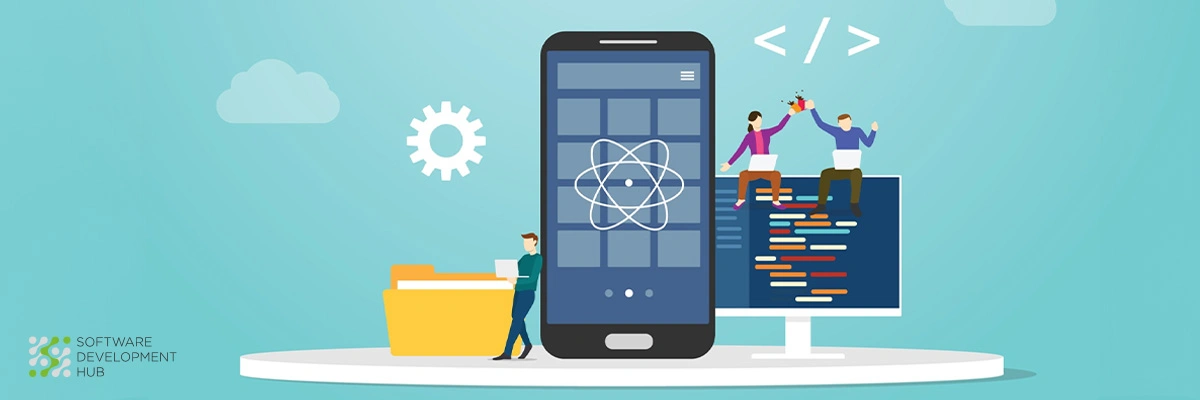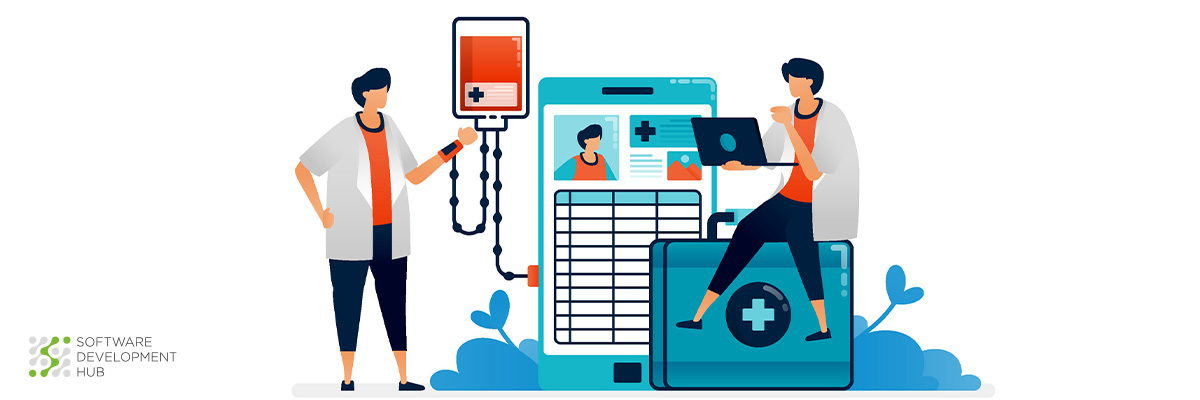Application Modernization Services to Upgrade and Transform Your Apps
In today’s rapidly evolving digital economy, businesses must keep up with increasing demands for performance, scalability, and user experience. Legacy applications, while once effective, often become bottlenecks—limiting innovation, increasing operational costs, and posing security risks. This is where application modernization services come into play.
Modernizing your existing software isn’t just about updating the user interface or migrating to the cloud. It’s about transforming your applications into agile, resilient, secure, and scalable systems that align with business goals and user expectations in 2025 and beyond.
This article will guide you through the what, why, and how of application modernization, its benefits, top strategies, and how expert service providers like SDH (Software Development Hub) can help.
1. What Is Application Modernization?
Application modernization refers to the process of updating and transforming legacy applications to newer, more efficient technologies, frameworks, and architectures. This may involve replatforming, refactoring, rehosting, containerization, or complete rebuilding.
Modernization doesn’t mean starting from scratch—it’s about preserving business value while adapting to modern standards.
Common Modernization Targets:
- Monolithic systems
- Outdated tech stacks (e.g., VB.NET, COBOL, Flash)
- On-premise applications
- Rigid, non-scalable architectures
- Software with poor UX/UI or mobile incompatibility
2. Why Application Modernization Is Critical in 2025
Legacy systems may still function, but they are increasingly becoming liabilities. In 2025, application modernization is no longer optional—it’s essential for digital transformation, innovation, and growth.
The Numbers Tell the Story:
- 72% of IT budgets in enterprises are spent on maintaining legacy systems.
- 87% of CIOs say outdated applications prevent them from executing digital strategies.
- Businesses that modernize apps report 40–60% faster release cycles and 50% reduction in downtime.
3. Benefits of Application Modernization Services
|
Benefit |
Impact |
|
Faster Time to Market |
Agile architecture enables continuous delivery and quicker releases. |
|
Lower Operational Costs |
Eliminate legacy maintenance costs and optimize infrastructure usage. |
|
Enhanced Security |
Modern frameworks offer stronger encryption, monitoring, and patching. |
|
Cloud-Native Readiness |
Unlock cloud scalability, elasticity, and on-demand resources. |
|
Improved Performance |
Faster response times, better uptime, and lower resource usage. |
|
Better User Experience |
Upgrade outdated UIs to mobile-friendly, modern interfaces. |
|
Future Scalability |
Design for growth—supporting integrations, modules, and microservices. |
4. Signs Your Application Needs Modernization
Not sure if your software needs upgrading? Here are red flags:
- Slow performance and frequent crashes
- Inability to scale or integrate with new systems
- Manual-heavy workflows with minimal automation
- Obsolete or unsupported technology stack
- High operational costs and downtime
- Non-compliance with modern security or privacy standards (e.g., GDPR, HIPAA)
- No mobile or cross-platform support
5. Key Modernization Strategies and Approaches
Application modernization is not one-size-fits-all. Based on your business goals, app complexity, and budget, choose from these approaches:
Rehosting (Lift and Shift)
- Move legacy apps to the cloud without changing core architecture.
- Fast, low-risk, and suitable for minimal workloads.
- Example: Migrating an on-premise ERP system to AWS EC2.
Replatforming
- Minor code changes to enable compatibility with cloud platforms or containers.
- Add scalability, auto-scaling, and cost optimization.
Refactoring
- Rewrite parts of the codebase to improve performance, maintainability, and cloud-readiness.
- Example: Breaking a monolith into microservices.
Rebuilding
- Redesign and rewrite the application from scratch using modern technologies.
- Costlier but offers maximum flexibility and ROI.
Retiring/Retaining
- Eliminate obsolete systems or retain parts of legacy infrastructure while modernizing others.
6. Modern Tech Stack for Application Modernization
Selecting the right stack ensures scalability, performance, and maintainability.
|
Layer |
Modern Tools & Frameworks |
|
Frontend |
React.js, Angular, Vue.js |
|
Backend |
Node.js, Python (Django), Java (Spring Boot), .NET Core |
|
Mobile |
Flutter, React Native, SwiftUI, Kotlin Multiplatform |
|
Database |
PostgreSQL, MongoDB, MySQL, Firebase, Amazon Aurora |
|
Cloud |
AWS, Microsoft Azure, Google Cloud Platform (GCP) |
|
Containerization |
Docker, Kubernetes, Helm |
|
CI/CD |
GitHub Actions, GitLab CI/CD, Jenkins, ArgoCD |
|
Monitoring |
Prometheus, Grafana, Datadog, New Relic |
|
Security |
OAuth 2.0, JWT, SAST/DAST, Vault by HashiCorp |
7. SDH’s Approach to Application Modernization
At Software Development Hub (SDH), we offer comprehensive application modernization services tailored to your goals, industry, and existing infrastructure.
Our 6-Step Modernization Framework:
1. Assessment & Audit
- Analyze architecture, dependencies, performance metrics.
- Identify business-critical components.
- Evaluate cloud-readiness.
2. Strategy Development
- Select the best-fit modernization approach.
- Define roadmap, resources, timeline, and KPIs.
3. Architecture Redesign
- Transition from monolith to microservices or serverless.
- Implement APIs and DevOps pipelines.
4. UI/UX Revamp
- Design mobile-first, accessible interfaces.
- Conduct usability testing and user research.
5. Cloud Migration & Integration
- Deploy in AWS, Azure, or hybrid environments.
- Integrate with 3rd-party systems, legacy databases.
6. Testing, Launch & Support
- Automated testing (unit, regression, performance).
- Post-deployment monitoring and SLA-driven support.
We also prioritize data security, compliance (e.g., ISO, GDPR), and disaster recovery planning during every modernization project.
8. Use Cases Across Industries
Healthcare
Modernizing EHR systems, enabling remote patient monitoring, ensuring HIPAA compliance.
Finance
Migrating legacy core banking systems to cloud; enhancing fintech apps with real-time analytics.
Retail & E-commerce
Transforming inventory, POS, and CRM platforms; implementing microservices for seasonal scalability.
Logistics
Digitizing warehouse systems, automating shipment tracking, integrating with ERP software.
9. Common Challenges—and How to Overcome Them
|
Challenge |
Solution |
|
App Downtime During Migration |
Use phased rollouts, staging environments, and containerization. |
|
Data Integrity & Migration Risks |
Perform ETL audits, ensure encryption, validate all migrated records. |
|
Budget Overruns |
Clear scope definition, agile sprints, and transparent communication. |
|
Legacy Dependencies |
Identify critical integrations and provide APIs for smooth transitions. |
|
Cultural Resistance |
Educate teams on DevOps, cloud benefits, and provide adequate training. |
10. Cost of Application Modernization
Costs vary depending on:
- Application size and complexity
- Strategy chosen (rehost vs. refactor vs. rebuild)
- Third-party integrations and licensing
- Compliance requirements
- Infrastructure and hosting preferences
On Average:
- Small-scale rehost: $10,000–$30,000
- Mid-sized refactor: $50,000–$150,000
- Enterprise-level rebuild: $200,000+
At SDH, we offer flexible pricing models (Fixed Price, Time & Materials, Flex Scope) to match your budget and risk appetite.
11. KPIs to Measure Modernization Success
Success is more than just deployment. Monitor these key indicators post-modernization:
|
Metric |
Target Goal |
|
App Load Time |
< 2 seconds |
|
Release Frequency |
Weekly or faster |
|
System Uptime |
> 99.9% |
|
Defect Rate |
< 1 per 1000 lines of code |
|
Operational Cost Reduction |
30–50% within the first year |
|
User Satisfaction (NPS/CSAT) |
+20% improvement |
Your Path to Agile, Scalable, and Future-Ready Software
Application modernization isn’t just about staying current—it’s about staying competitive. Businesses that transform their digital infrastructure unlock the benefits of agility, innovation, and operational efficiency.
Whether you aim to migrate to the cloud, adopt a microservices architecture, revamp your UI/UX, or overhaul your core systems entirely, a strategic modernization approach will set you up for long-term success.
Partnering with a proven development team like SDH ensures you get deep technical expertise, domain knowledge, and end-to-end support—from audit to execution and beyond.
Categories
About the author
Share
Need a project estimate?
Drop us a line, and we provide you with a qualified consultation.








